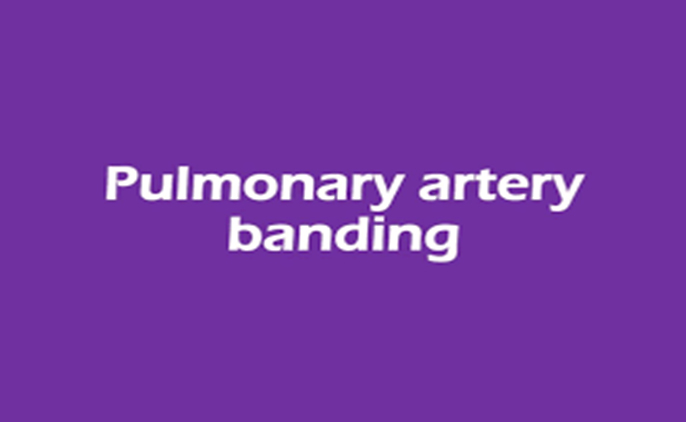Pulmonary artery banding (PAB)
In some congenital heart diseases, this surgical technique is used to reduce pulmonary over circulation to prevent cardiac failure and to provide protection against pulmonary hypertension.
Indications
- Single ventricular defects
- Unbalanced ventricles
- Congenital heart diseases
- Neonates unsuitable for conventional methods
- To preserve the optimal cardiac status
- Pulmonary hypertension
Limiting factors
- To assess optimal tightness of the band
- Change in situations
- Pulmonary branch distortion
Surgical Technique
- Pulmonary artery is resized by placing a band around the vessels.
- Putting the band around the vessel is not difficult but finding an optimal point of constriction in the pulmonary artery is not an easy task.
- Two techniques are available:
- Postero-lateral thoracotomy
- Pericardial incision
- Minimal postoperative pericardial adhesions
- Banding placement is more difficult and less accurate
- Median sternotomy
- Minimal distortion to the pulmonary branch
- Optimal circumferential access to the pulmonary trunk
- Accurate band placement
- Ventilation is possible
- Easier adjustments of the band
- Does not preserve pericardial integrity
Postoperative complications
- Stenosis of the pulmonary branch
- Pulmonary trunk erosion
- Insufficiency of pulmonary valve
- Tract obstruction
Some Facts about PA Banding Surgery
| Number of days taken for initial investigations | 1 |
| Number of days in ICU | 1 |
| Number of days in Room | 3 |
| Follow up days | 7 |
| Total days required to stay overseas for treatment | 12 |
Role of Parishay Healthcare in PA Banding!
After you contact us, a relationship manager is allocated to you who arranges a teleconsultation with an excellent healthcare provider according to your need. After your consent, we move forward with your untroubled travel arrangements, treatment plan, and follow-up care.
For more information visit our website www.@parishayafrica.com


